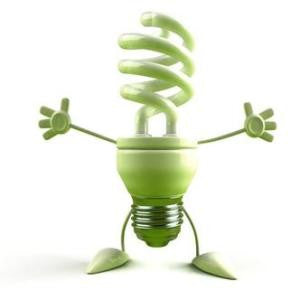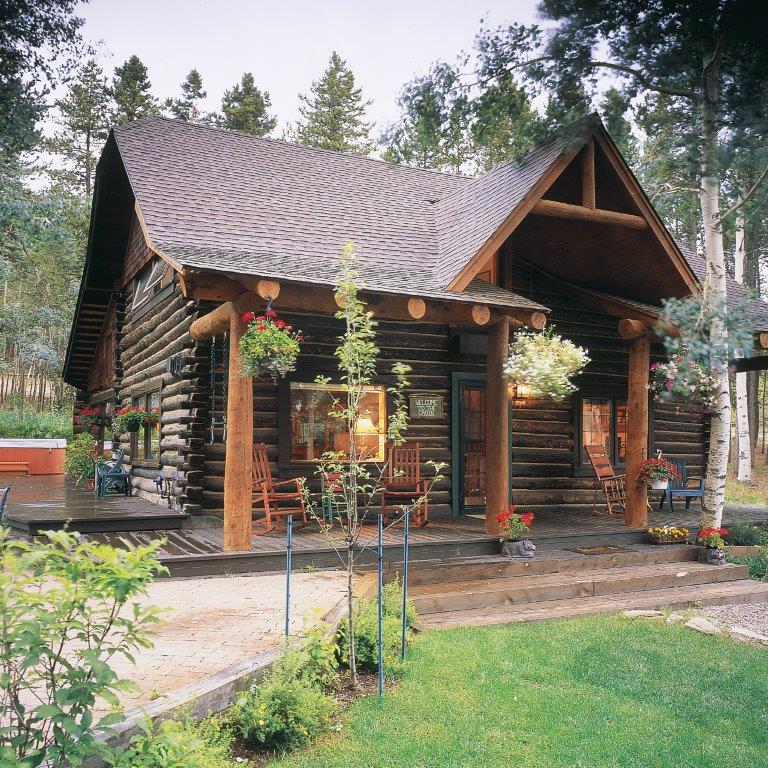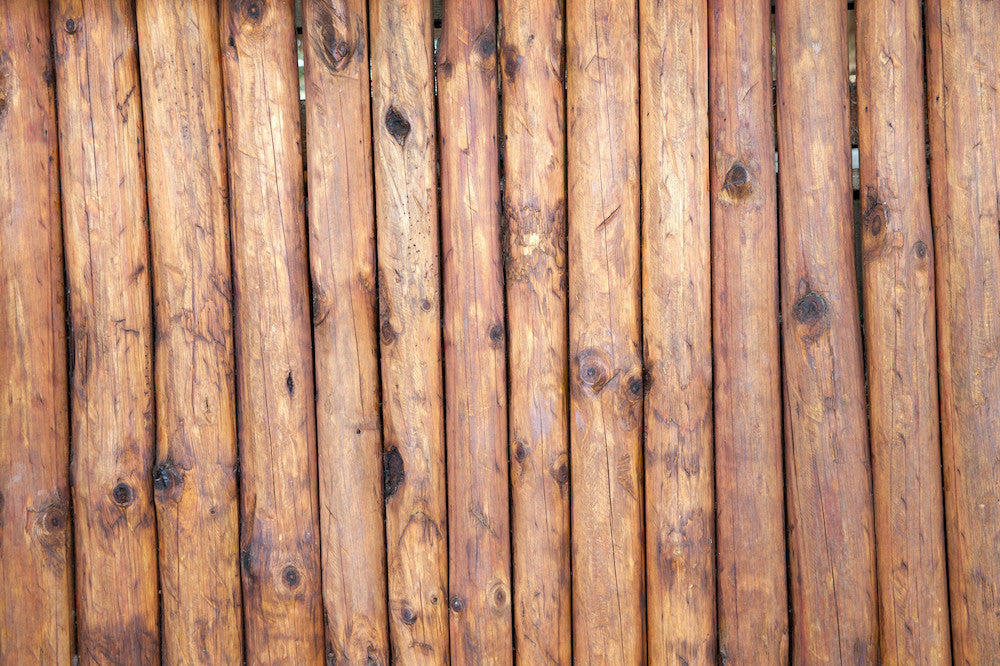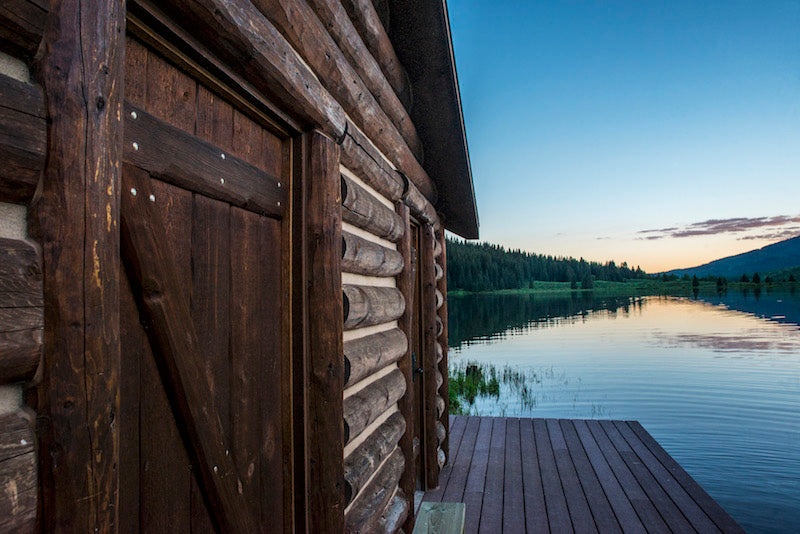Smart Energy Solutions for Your LogHome

Americans who are choosing to transition from living in traditional homes to log-homes is on the increase; and here are just a few statistics from the American Institute of Architects that are intriguing: 1) currently, there are more than 500,000 log homes in the United States 2) 90% of existing log homes are primary residences and 3) log home sales have doubled since 1995 to the tune of $1.7 billion!
Like any traditional-home owner, log-home owners are interested in incorporating smart energy solutions for their homes to not only save money but help to maintain a cleaner, less-polluted environment in a world where natural resources are becoming increasingly more finite.
There are many steps one can take to ensure one’s log-home is utilizing natural resources wisely and modestly; and here are a few smart energy ideas you might find quite interesting:
Energy-Star Appliances
Energy-Star is a program under the guidance of the U.S. Environmental Protection Agency (EPA) as well as the U.S. Department of Energy. In a nutshell, Energy Star provides assistance and expertise that is intended to directly help home-owners do their part to protect the environment by utilizing energy-friendly components in their homes as much as possible.
Any number of building features can be incorporated in an energy-smart log-home including high-efficiency air-conditioners, metallic-oxide coated windows to improve insulation capabilities, low-flow toilets and a host of other eco-friendly products and devices that will noticeably reduce monthly utility bills. Whenever you might see the term ‘Energy-Star’ attached to any products used within a home---whether that label might refer to a refrigerator, lighting systems, an air purifier or washing machine, for example--- you know you are in the presence of a state-of-the-art product that is making a positive impact on our delicate world as well as a positive impact on one’s pocketbook! According to the EPA, a log-home that optimally utilizes Energy-Star products can deliver 20% savings on utilities over the course of a single year!
But let’s take a look at a few specific building products that are worth looking into if you are contemplating building a log-home!
Low-E Windows
Low-E windows have coated panes to help to dramatically enhance energy efficiency which becomes very apparent when you begin to compare energy efficiency capabilities of plain, clear glass. Low-E windows are designed to block heat, not light. Regular glass panes will absorb heat energy from the sun in addition to radiant heat on the inside. Any heat taken in through regular glass during daylight hours is, unfortunately, released right back out the window at night. This results in very uneven temperatures in a home throughout a 24-hour period. Predictably, heating and cooling systems are overused and money goes out the window right along with the coveted heat on a cold winter night!
The film coating on Low-E windows reflects radiant, infrared energy which simply means desired heat on the inside is not allowed to pass through the glass, but is kept inside, where it belongs. Bottom line: Low-E windows control one’s heating and cooling costs, regardless of outside temperature extremes. The ideal building ‘envelope’ is created and adjusting the thermostat becomes an infrequent occurrence since heated or cooled air stays at the temperature where it belongs, depending on the season. Energy.gov states that Low-E windows can and do reduce energy loss by as much as 30% to 50%!
Depending on a log-home’s geographic location, weather-specific varieties of Low-E windows are available to cater to targeted climates. Performance criteria for Low-E windows (including skylights) are rated and certified by the National Fenestration Rating Counsel to help consumers choose the most appropriate, climate-specific windows based on their log-homes’ geographic locations. A person whose log-home is located in a mountainous community in Colorado will choose different Low-E windows than a log-home that is built in Arizona. Different types of Low-E coatings have been designed for high solar-gain, moderate solar-gain and low solar-gain.
The HVAC System—The Joy of Leaving it Alone
The HVAC system has to do with the heat, ventilation and air-conditioning components; and when sealed air-ducts and programmable thermostats are utilized, the entire HVAC system will perform much more efficiently!
Did you know that by turning your thermostat back 10-15 degrees for 8 hours (i.e.: while you are asleep or are at work) you can save as much as 15% on your heating bill! With a programmable thermostat, you adjust the times you want the heating or AC to turn on, according to a pre-set schedule; and these systems can maintain six or more temperature settings a day. According to Energy Star, when a programmable thermostat is properly used, it—by itself—can save an average of $180.00 each year in energy costs!
CFL Lighting—Illuminating the Savings
CFL stands for Compact Fluorescent Light bulbs. Interestingly, CFL bulbs use 75% less energy than incandescent bulbs and Energy-Star-certified CFL bulbs use as much as 90% less energy than incandescent bulbs. CFLs are up to 4 times more efficient than incandescent varieties and last 10 to 25 times longer. Since CFL bulbs produces about 70-90% less heat, they can actually make an impact with cutting energy costs associated with home cooling—this, according to Energy Star!
‘Low-Flow’ Faucets---Less Water, More Savings
The EPA has some astounding figures that might make one rethink the importance of utilizing low-flow components in one’s log home! For example: a realistic scenario would involve a family of four where each person uses a bathroom sink only 6 minutes each day. Through the use of low-flow faucets, that same family can save 48 gallons a day! EPA figures indicate this would save almost 18,000 gallons of water each year—and that is just from the bathroom sink, alone! Additionally, by using just one low-flow shower head and one faucet aerator, a family can reduce its HOT water consumption by more than 4,200 gallons in a single year! This, in turn, lowers a home’s natural gas water-heating costs!
Insulation—Baaack to the Basics
Perhaps the clue from the title hinted to a type of insulation that is gaining in popularity—sheep's wool! Being a totally natural material, it has impressive insulating properties and eco-friendly characteristics. It is a renewable resource and does a very effective job of retaining heat in winter and keeping it out in the summer.
Sheep’s-wool insulation performs better than glass-fiber insulation and has the ability to absorb high levels of condensation (40% of its own weight) and still feel dry. Another remarkable trait concerning sheep’s wool is its ability to absorb dangerous gases! Astonishingly, Sheep’s wool has an inherent ability to absorb nitrogen dioxide, sulphur dioxide, formaldehydes and neutralize them! Sheep’s-wool has a life expectancy of more than 100 years!
One home in Pennsylvania is about as ‘green’ as any home can get; and all materials for this 13,000 square-foot titanic structure were carefully selected and reviewed to ensure the utmost in Energy Star standards. With that being said, the home was insulated with wool---shorn from 2,600 sheep!
Energy-Star and the HERS Index
HERS is an acronym for Home Energy Rating System Index which is the go-to standard in the building industry for measuring a home’s energy efficiency. The HERS Index is also the nationally-recognized system for inspecting and calculating an existing home’s current energy performance. This allows log-home owners to make modifications so greater energy savings can be realized. A ‘relative-performance’ score is calculated; and the lower the number, the more energy efficient the home. It is here where the real separation takes place: the difference between the ‘men’ and the ‘boys’ as it applies to homes’ energy efficiencies.
According to the U.S. Department of Energy, a ‘typical resale-home’ can expect a score of about 130 while a newer home that does not fully utilize Energy-Star systems comes in with a score of 100. Fully-equipped Energy-Star homes can boast of delightfully low scores that hover around ‘68’. To add a bit of clarification to that number, a home with a HERS Index Score of ‘70’ is 30% more energy efficient than a standard new home! Wow!
Smart energy technology is here to stay! The options are highly-varied, they are effective and the energy-saving results are impressive. It’s all about helping log-home owners, everywhere, manage their utility consumption and lower their utility bills. And, of course, the planet benefits, too---one log-home at a time!




